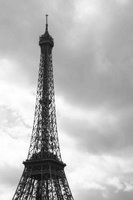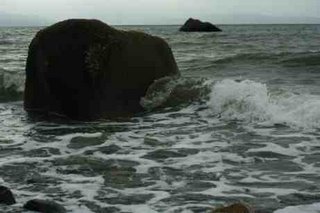Latin@ in Paris
Paris has hosted its share of Latin American literary figures. Miguel Angel Asturias studied here, at the Sorbonne, and returned later in his life both as a political refugee (from Guatemala and Argentina) and as an ambassador. Julio Cortázar and Alejo Carpentier were also here, along with Luis Cardoza y Aragón and a whole group of Guatemala’s generación 1920. They hung out together, and I was curious what there is now, in the city, as far as a latino community.
After a disappointing experience with pimient fort (but not strong enough) I tried to find some good Mexican food. An ex-pat chilango referred me to Anahuacalli which was pretty good—especially the salsa and beans—and to an épicerie on Dante street. The épicerie wasn’t exactly what I imagined—my fantasy was a French version of Detroit’s Mexican-town shops with lots of dried chiles and beans and maybe even some nopales. Instead it was stocked with an incredibly surly shopkeeper and a selection of La Costeña canned goods (vastly superior to Monoprix’s selection of Danish distributed Taco Bell knockoffs, however). A jar of mole was 12 euros, and a kilo bag of MASECA 18 euros. Next time I’ll come better prepared, and maybe make myself some extra spending money.
I’ll also have to be a better salsa dancer. Salsa from the 70s and 80s is hot, there are tons of clubs, and folks are really good dancers. Very ballroom, and in the few times I’ve been I’ve yet to encounter a Spanish speaker. I hear Spanish in the street though—lots of Spaniards, and some Colombians, Mexicans and Cubans too.
Crossing the Seine on my way home I encountered the 9ème Collectif des Sans-Papiers, handing out the following bulletin:
Pour dénoncer les practiques scandaleuses et intolérables dans le pays des droits de l’homme, qui ont pour but d’intimider les sans-papiers en créant un climat de peur afin qu’ils se cloîtrent de plus dans la clandestinité.
NON A LA MACHINE A EXPULSER LES
SANS-PAPIERS
NON AUX RAFFLES
NON AUX ACCORDS BILATERAUX RATIFIES
ENTRE LA FRANCE ET L’AFRIQUE
REGULARISATIONS DE TOUS LES SANS-
PAPIERS
The television coverage of immigration here includes interviews with organizations, and African immigrants, in Spain, and juxtaposes images of boats with the ever-growing fence of the U.S. border, presenting different immigrations as a common, global “problem”. One channel showed a map with a red line like the Río Bravo stretching from California eastward, almost one-third of way across the entire Mexican-U.S. border. I don’t think I’ve seen that same image on television in the U.S. And probably with good reason. It’s ghastly. I wish I could better compare immigration policies between france, europe and the u.s., and more importantly, the resistance to the expulsory machine (as the flyer so aptly puts it) but they're both overwhelming.









